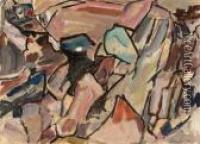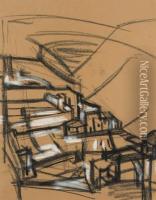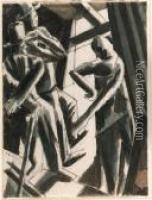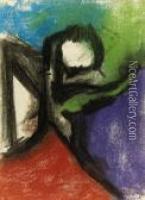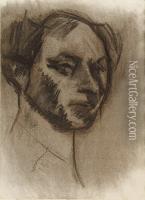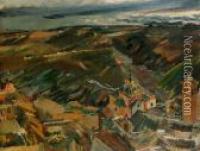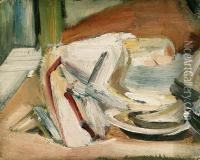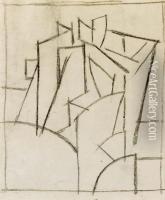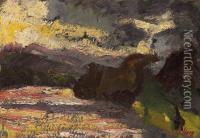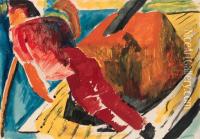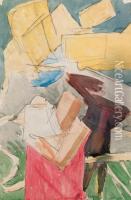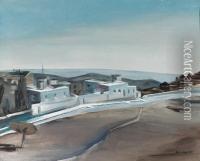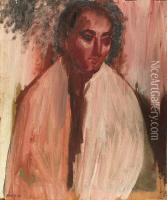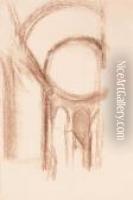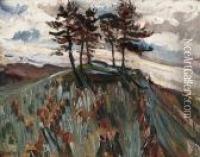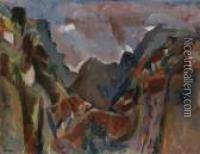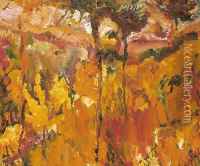David Bomberg Paintings
David Bomberg was a British painter, and one of the most audacious and influential artists of the 20th century. Born on December 5, 1890, in Birmingham, England, he grew up in a poor Polish-Jewish immigrant family in London's East End. He studied art at the Slade School of Fine Art in London from 1911 to 1913, where he was influenced by the works of Italian Futurists and Cubists, which led to his early adoption of a geometric style in his paintings.
During World War I, Bomberg served in the army, and his experiences on the Western Front had a profound impact on his work. His pre-war abstract style gave way to a more representational approach to painting, as seen in his war-inspired pieces, which often depicted the harsh realities of conflict.
After the war, Bomberg traveled extensively, including to Palestine and Spain, where he painted landscapes. His post-war work showed a significant shift in style towards a more expressionistic approach, with a focus on light and color. Bomberg's work was often underappreciated during his lifetime, and he struggled financially. He taught at the Borough Polytechnic in London, where he influenced a new generation of artists, including Frank Auerbach and Leon Kossoff.
Bomberg's art evolved constantly, defying easy categorization. He experimented with different styles and techniques throughout his career, ranging from abstraction to representational painting. Despite his lack of commercial success, his contributions to British art were significant, and he is now recognized as one of the pioneers of modernist painting in Britain.
David Bomberg died on August 19, 1957, in London. Since his death, his reputation has grown, and his work is celebrated for its intensity and innovation. Collections of his work can be found in many major art galleries and museums across the UK and internationally.
